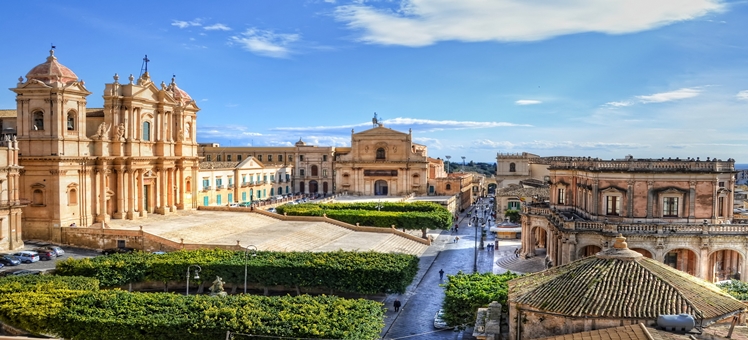
A rich tapestry of history and culture interwoven with a relaxed Mediterranean atmosphere, Sicily has a lot of sway for the modern traveler. Reaching towards the North African coast, Sicily and its surrounding islands are packed full of attractions. Head to the city of Catania to marvel at beautifully constructed Baroque buildings, visit gritty Palermo to soak up the capital’s artistic vibe or simply laze on the lava beaches of the Aeolian Islands.
The north coastReaching all the way from Messina to Palermo, the north coast of Sicily is famed for its sweeping seascapes, sandy beaches and collection of charismatic towns and villages. Home to Cefalù - one of the most popular and picturesque towns - here you will uncover a warren of medieval alleyways, a Norman cathedral and a striking white sandy beach. Also home to three separate mountain ranges, here you’ll discover a whole host of dramatic scenery. Rolling hills and rocky mountain ranges tumble into coastal villages, making this section of Sicily one of the most attractive around.
The east coast
Home to the Ionian Riviera and running along the scenic stretch from Catania to Mount Etna - declared a UNESCO World Heritage site in 2013 - Sicily’s east coast is full of surprises. Head to the fascinating town of Taormina to uncover winding streets strewn with medieval buildings, cafes, bars and boutique shops. Alternatively, spend your time marveling at the dominating presence of Mount Etna – the tallest active volcano in Europe. Here you can make excursions to the volcano's main crater area or, for something a little different, ski down its upper slopes during wintertime.
South-east Sicily
Sandy beaches, river valleys and UNESCO World Heritage Sites dominate the south-east of Sicily. Here, powdered sands are stacked side-by-side awaiting beach fanatics and avid sunbathers. Scatted around all the beaches are attractive Baroque towns such as Ragusa, Modica and Noto. The gem of this area, however, is Syracuse – once the most powerful city in Southern Italy and famed for its victorious triumph over Athens. Filled with notable archeological attractions, no trip to south-east Sicily would be complete without a visit to Syracuse.
West Sicily
Offering travelers an entirely different experience, Sicily’s west coast exudes a rustic appeal. A glimpse into the islands past western Sicily harks back to its Arabian occupation with its distinctly bohemian vibe. A setting where rocky hinterland cascades into lush olive groves and fragrant vineyards, here you can enjoy a glorious selection of Mediterranean seafood and many variations on the couscous, preserved Greek temples and sandy beaches including San Vito Lo Capo, arguably Sicily's most beautiful beach. While here, make sure to also visit the towns of Erice, Trapani, Marsala and Sciacca as well as the Valley of The Temples in Agrigento to soak up Sicily’s rich and varied history.
The interior of Sicily
Sandwiched between mountains and valleys, Sicily’s interior is often overlooked in favor of the coastline. Wrongly so, however, as the expansive cross-section of Sicily lays claim to some of the island’s most interesting assets. Archeological sites housing famed Roman mosaics, sleepy hilltop towns and fruitful valleys: this part of Sicily is undeniably scenic. Head to Morgantina to admire breath-taking archeological sites or wander through the untarnished nature trails of The Madonie Regional Natural Park.